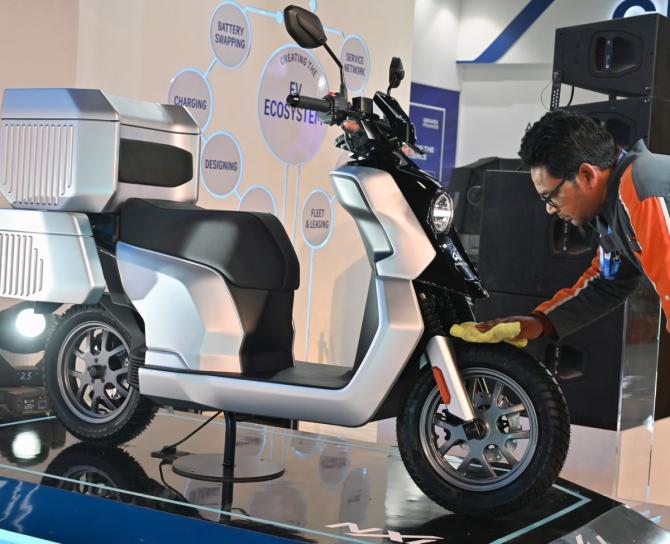The ministry of heavy industries is working on broad contours of the third phase of Faster Adoption and Manufacturing of Electric Vehicles or FAME-III.

Based on discussions with stakeholders, the ministry is proposing to allocate Rs 26,400 crore for FAME-III subsidy alone with electric two wheelers getting around Rs 8,158 crore, electric buses Rs 9,600 crore and electric three-wheelers Rs 4,100 crore, according to sources in the know.
Along with some other components like setting up an innovation fund and money for testing , the total allocation could cross Rs 33,000 crore, estimates suggest.
Further discussions on the basic contours of the scheme are currently ongoing.
The focus of the proposed scheme will clearly be on enhancing electric-based and environment-friendly public transportation in the country.
The scheme is also planning to support e- tractors with a fund of over Rs 200 crore.
Hybrid vehicles and hydrogen fuel cell vehicles might be added to the list but initially with a token allocation of Rs 100 crore.
Electric four-wheelers are to be allocated around Rs 1,800 crore.
After FAME-I and FAME-II, the finance ministry had reportedly questioned the need for extending the subsidy scheme any further.
However, the ministry of heavy industries has been pushing for it, arguing the need for electric and alternate fuel vehicles.
The third phase proposed allocation is much higher than FAME-I and FAME-II at Rs 895 crore and Rs 10,000 crore, respectively.
For electric two-wheelers, the proposal under discussion is to continue with the subsidy for four years in a phase-down manner: It will start with Rs 15,000 in the first year per KWH of battery, followed by Rs 7,500 in the second year, Rs 3,000 in the third and Rs 1,500 in the final year of the scheme.
The expectation is that in the fifth year, the total electric two-wheeler sales would touch 10.5 million.
The maximum subsidy per vehicle will also be capped at Rs 15,000 in the first two years but will go down to Rs 6,000 in the third year and Rs 3,000 in the fourth year.
For electric four wheelers such as in cabs, the subsidy per KwH battery will be offered on a receding scale, Rs 10,000 in year one, followed by Rs 8,000, Rs 5,000 and Rs 3,500 in the subsequent years.
The maximum subsidy will also be capped per vehicle at Rs 1.5 lakh in first year going down to Rs 65,000 in the fourth year.
A similar receding subsidy model is also being proposed for e-three wheelers going down from Rs 15,000 in first year to only Rs 5,000 per KWH of battery in the fourth year, while the cap on each vehicle for subsidy goes down from Rs 100,000 in the first year to Rs 50,000 in the fourth.
For electric buses, models based on capex subsidy and viability gap funding (VGF) like the PM e-bus Sewa scheme are being considered. A total of 36,700 e-buses will be supported under the scheme.
The policy is also looking at providing an additional incentive of 10 per cent for all electric vehicles across all segments registered by a women.
As alleged violation of the phased manufacturing programme or PMP norms has adversely impacted the progress of EVs, especially in electric two wheelers, the government is looking at extending the standard operating procedures (SOPs) under the automobile PLI scheme for electric vehicles.
Among others, the requirement for bank guarantee, integrity pledge and penal provisions, which are part of the PLI auto scheme, could be extended for FAME III subsidy disbursements.
MHI is also discussing setting up of an Innovation Fund with a sum of Rs 1,000 crore.
This could be used for pilot projects for public transportation including hydrogen-powered buses.
An expert advisory panel is proposed to be set up under MHI to administer the fund.
While the fund could give up to 80 per cent of the project cost, with the remaining coming from the industry.
According to MHI estimates, another Rs 3,000 crore would be required for test centre upgradation fund apart from a public outreach and administration scheme.











